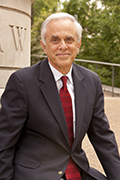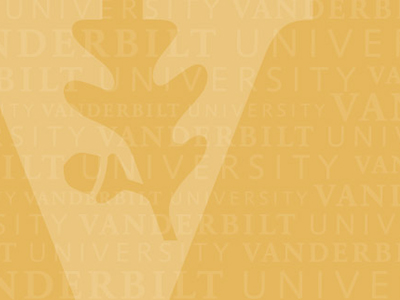 Jeffrey Schoenblum delivered the prestigious Hugh J. and Frank Tamisea Distinguished Lecture at the University of Iowa College of Law on Sept. 3. In his lecture, Professor Schoenblum addressed revolutionary changes in trust law occurring in some states at the same time a majority of states are enacting the Uniform Trust Code, a statute largely based on the traditional precepts of common law trusts.
Jeffrey Schoenblum delivered the prestigious Hugh J. and Frank Tamisea Distinguished Lecture at the University of Iowa College of Law on Sept. 3. In his lecture, Professor Schoenblum addressed revolutionary changes in trust law occurring in some states at the same time a majority of states are enacting the Uniform Trust Code, a statute largely based on the traditional precepts of common law trusts.
The biennial Tamisiea Lectures were created at the College of Law in 1989 by the Tamisiea family in memory of Frank Tamisiea and Hugh J. Tamisiea, father and son UI law school graduates. Prior Tamisea Lectures have been delivered by Harold Hongju Koh of Yale Law School, who delivered the 2013 lecture; U.S. Supreme Court Justice Antonin Scalia; Cass R. Sunstein of Harvard Law School; current Yale Law School Dean Robert Post; John Langbein of Yale Law School; Lawrence Waggoner of Michigan Law School; Mark Ascher of the University of Texas School of Law; and Edward J. McCaffrey of the University of Southern California Law School.
Professor Schoenblum’s lecture posed the question “What Is a Trust?” to address his thesis that this question “is no longer easily answered” due to the fact that some states have enacted trust statutes that deviate markedly from traditional principles that have characterized trust law for hundreds of years.
“The traditional model of a trust, which has essentially remained the same for hundreds of years, is now being challenged by the increasing number of states offering the ‘New Trust,’” he said. “Although scholars have generally assumed there is a move to greater uniformity in trust law because a majority of states adopted the Uniform Trust Code, states that didn’t adopt the UTC are becoming very entrepreneurial by offering options not available in UTC states—and they’re attracting business away from states that offer only traditional trusts.”
Schoenblum contends that the trend toward establishing “New Trusts” in states where they are legal is significant both in terms of the expectations of parties who form trusts and of enforcement by courts. “Some characteristics of the ‘New Trust’ are fundamentally opposed to the central concepts of the traditional trust,” he said. “The ‘New Trust” challenges the fundamental tenets of the traditional trust to such a degree that they really ought to be regarded as different constructs.”
In his lecture, Schoenblum cited examples of “New Trust” features that don’t follow the rules of traditional trusts, including:
- Dynasty Trusts, which “essentially reject the rule against perpetuities,” Schoenblum said, thus enabling the trust’s creator to “control the trust for an eternity. Through a loophole in federal tax law, use of this trust can result in the growth of assets, due to tax avoidance, at an exponentially greater rate over several generations than would be possible without a trust or with a traditional trust.”
- Directed Trusts, in which the trustee serves only as the holder of the trust’s legal title, but has no fiduciary responsibility or liability, as designated investment advisors manage the assets and a distribution committee governs payments to beneficiaries.
- Secret Trusts, through which beneficiaries are not informed of their status as beneficiaries and/or of the actual terms of the trust. This severely undermines the accountability of the trustee to the beneficiaries. “To assure that the trustee does not abuse the trust, a trust protector is typically appointed and an order of succession to this position is specified,” Schoenblum said.
- “No exception for creditors” Spendthrift Trusts, which prevent the creditors of beneficiaries from reaching a beneficiary’s share of the trust before its distribution—with no exceptions for alimony and child support. Traditional trusts, even with a spendthrift provision, Schoenblum emphasizes, cannot assure the protection of the the beneficiary’s interest in the trust from alimony and child support obligations.
- Self-settled Asset Protection Trusts, which allow an individual to create a spendthrift trust and make himself or herself a discretionary beneficiary. Future creditors of the individual cannot reach his interest in the trust. This is strikingly at odds with the absolute denial of such spendthrift protection under traditional trust law. “, Through careful drafting, the creator of the trust is able to maintain control of and access to the assets while shielding himself or herself from future creditors,” Schoenblum said.
- Tax-free Trusts, which allow the trust’s creators to avoid state tax liability altogether simply by changing the site of the trust’s administration to a no tax “New Trust” state. This result is being achieved due to successful federal constitutional challenges to jurisdictional aspects of state income tax laws.
Rather than limiting the ability of a trust’s creator to control the property after it has been placed in trust, Schoenblum concludes, the “New Trust” may do just the opposite, by allowing the trust’s creator to retain control over the property within the trust forever, while substantially minimizing taxation.
Schoenblum, who has taught at Vanderbilt Law School since 1977, is an internationally renowned scholar of trusts, trust administration and cross-border private wealth transfers. He is the author of the leading treatise, Multistate and Multinational Estate Planning.

